- The European Union played a key role in promoting and maintaining peace in Europe;
- The block expansion stalled a decade ago, in 2013, for 7 main reasons;
- In addition to its initial objective, the European bloc currently plays a crucial role in the geopolitical balance between the United States and China.
The European Union (EU), formerly known by different names and different structures, has taken a complex and significant path since its creation in the post-World War II period.
The need to unite nations once in conflict and build a peaceful future has shaped a narrative of cooperation and integration.
However, the process of expansion of the European Union faces a series of challenges, from expansion fatigue to security issues and democratic values, paralyzing this process for years.

The history of the European Union
After the horrors of World War II, European leaders envisioned a way to avoid future conflicts through collaboration and integration.
Then, in 1950 the Schuman Plan proposed an innovative European Coal and Steel Community (ECSC), uniting the resources of France and Germany. This framework not only promoted economic stability and interdependence, but also laid the groundwork for a broader union.
The Treaty of Rome, signed in 1957, was a watershed, establishing the European Economic Community (EEC) and the European Atomic Energy Community (Euratom). As a result, this step inaugurated a common market, eliminating trade barriers and promoting economic growth among member states.
In the following decades, the Union saw the incorporation of new countries, such as Spain and Portugal in 1986. Then, the fall of the Berlin Wall and the end of the Cold War opened the doors for the accession of nations from Central and Eastern Europe, increasing the diversity and scope of the union.
Ultimately, the Maastricht Treaty defined the EU as a political and economic entity in 1992. It laid the foundation for the single currency – the euro – which was subsequently adopted by several member countries. This strengthened economic cohesion and expanded the EU’s influence on the global stage.
Timeline of the EU enlargement process
The EU enlargement process involved admitting new member states over time. For better visualization, here are the main events of this process:
1951-1957:
- In 1951, the European Coal and Steel Community (ECSC) was created by the six founding States: Belgium, France, West Germany, Italy, Luxembourg and the Netherlands.
- In 1957, the Treaty of Rome established the European Economic Community (EEC) and the European Atomic Energy Community (Euratom), also including the same six founding countries.
1973:
- Denmark, Ireland and the United Kingdom became members of the EEC on January 1, 1973.
1981-1986:
- Greece became a member of the EEC on January 1, 1981.
- Spain and Portugal joined the EEC on January 1, 1986.
1990-1995:
- With the fall of the Berlin Wall and the end of the Cold War, expansion into Central and Eastern Europe becomes a real possibility.
- Austria, Finland and Sweden join the EU on January 1, 1995.
2004:
- One of the biggest expansions of the EU took place on May 1, 2004, when ten countries joined the bloco/ Cyprus, Czech Republic, Estonia, Hungary, Latvia, Lithuania, Malta, Poland, Slovakia and Slovenia.
2007:
- Bulgaria and Romania became members of the EU on January 1, 2007.
2013:
- Croatia joined the EU on July 1, 2013.
2020s:
- The issue of enlargement continues to be debated in relation to Western Balkan countries such as Albania, Montenegro, North Macedonia, Serbia, Bosnia and Herzegovina and Kosovo.
7 Reasons Why the European Union Stopped Adding New Countries to the Union
The expansion process of the European Union (EU) in 2023 is on hold, confronted by a complex mix of obstacles and monumental dilemmas. Analysis of the facts reveals many different reasons that together affected the decision to stop accepting new countries into the European Union.
- Growth Fatigue: Following the entry of several Central and Eastern European countries into the EU in the 2000s and 2010s, some older member states have shown signs of fatigue regarding continued expansion. For example, Germany and France, two founding members of the EU, expressed concerns about the speed with which new countries were admitted. They argued that consolidating and deepening existing relationships should be a priority before considering further additions to the Union.
- Facing Autocratic Challenges: In the Western Balkans, EU membership has been complicated by the presence of countries such as Serbia and Montenegro, where there are persistent challenges regarding respect for democratic values and the rule of law. For example, Serbia has faced criticism for its approach to freedom of the press and independence of the judiciary, which has raised concerns about its readiness to join the EU. In the case of already participating countries, such as Poland and Hungary, concerns are about the erosion of judicial independence, the restriction of the media and the weakening of democratic controls.
- Internal Migration and the Challenge of Refugees: During the migratory wave of refugees that reached Europe in 2015 – and has increased again in recent semesters – the EU found itself under pressure to deal with the mass arrival of migrants. The difficulty in coordinating a unified response to the crisis showed how internal concerns, such as the ability to absorb new members and deal with immediate challenges, can influence the EU’s willingness to expand its ranks. In addition, internal migration within EU countries also influenced this issue. As countries face challenges related to internal migration, such as the distribution of jobs and resources, this may affect their willingness to welcome new members into the EU.
- Brexit and Uncertainties on the Horizon: The case of Brexit, where the United Kingdom decided to leave the EU, generated significant uncertainty about the future of the Union. The complexity of the Brexit negotiations and the reorganization challenges that the United Kingdom has faced since then have led other States members questioning the wisdom of expanding the EU at a time of turmoil.
- Conflicts in Ukraine and the Balkans: Russia’s war against Ukraine has led the EU to reevaluate its approach to expansion, especially in neighboring areas. Geopolitical instability in the region highlights the importance of strengthening ties with neighboring countries before considering additions, as evidenced by the EU’s commitment to the Eastern Association and the Western Balkan Accession Action Plans.
- The Demand for Strict Assessments: The EU has adopted stricter scrutiny in assessing applicants for membership. In the case of Turkey, for example, which is a candidate for EU membership, the European Commission has emphasized the importance of meeting strict membership criteria, including democracy, rule of law and human rights. The EU’s more discerning approach reflects its intention to ensure that new members are aligned with its values and norms.
- Qualified Majority Voting (QMV): When it comes to issues such as joining new members, the European Union adopts the “Qualified Majority Voting” system. This means that important decisions must be approved by a qualified majority of member states, taking into account factors such as the countries’ populations. Since November 2014, qualified majority voting in the Council requires that at least 55% of Member States, representing 65% of the population, agree. This can make decision-making more complex and subject to intense negotiations between member states.
Today, the EU remains an evolving project. The challenge lies in balancing aspirations for expansion with the need to maintain internal cohesion.
Challenges of Unanimity Voting and the Transition to the Qualified Majority System (QMV)
The big problem with unanimous voting in International Organizations, such as the EU, is that it can make decision-making difficult and, in some cases, paralyze the decision-making process.
When unanimity is required to approve a measure, it means that all member states must agree with the decision. This can be problematic for several reasons:
Difficulty in reaching consensus: It is often difficult to obtain unanimous agreement from all members, especially on complex or controversial issues. A single country can block a decision even if most other countries support it.
Slow: Negotiating and persuading all members to agree can take a long time, which is especially problematic in crisis situations when quick responses are needed.
Fragility of cohesion: The need for unanimity can create tensions between members, as a country can use its veto power as a bargaining tool to obtain specific advantages in exchange for their agreement.
It is for these reasons that the EU seeks the implementation of “Qualified Majority Voting”. With QMV, a decision is passed if a specific majority (usually a two-thirds or three-quarters majority of members) supports it, rather than requiring unanimity. This has some advantages:
- Agility: Decisions can be made faster, allowing the organization to respond more effectively to challenges and opportunities.
- Fewer Blocks: A single country cannot block a decision, which can increase the effectiveness of the organization.
- Cohesion: Although there may be disagreement, the QMV system encourages members to seek compromises and build coalitions to achieve the necessary majority.
The big problem with unanimous voting is evident in many sectors, such as defence, fiscal affairs and foreign affairs. In these areas, decisions still depend on the unanimous agreement of all member states, which can be challenging to achieve.
However, there is a growing desire to migrate to the Qualified Majority System in these sectors as well, recognizing the need for more agile and effective decision-making.
The possibility of a European Union at different speeds
The idea of a European Union at different speeds, often referred to as “Multi-Speed Europe” or “Multi-Speed Europe”, is a concept that has been debated over the years as a way to accommodate the diversity of interests and levels integration of EU member states.
This implies that some countries may progress more quickly towards European integration than the others, depending on their willingness and ability to meet certain criteria and obligations.
One of the advantages of this model is that it can make the accession process more flexible and adaptable to the realities of each candidate country. This can be particularly relevant for countries that are at different stages of political, economic and institutional development.
As an example, a candidate country could initially join the EU with a more limited status, without access to all rights and benefits, but as it meets the requirements and makes progress in areas such as democracy, human rights and the economy, it could progress to a fully-fledged position in the EU.
Such an approach could be beneficial for EU expansion, especially when considering concerns about the ability to absorb new members without undermining the cohesion and effectiveness of the Union.
French President Emmanuel Macron has been a prominent advocate of the idea of a multi-speed European Union. He argues that this could allow member states that want deeper integration to move forward, while others that are more reticent can remain at a lower level of integration.
However, there are also significant challenges associated with this approach. There may be concerns about creating divisions between member states and the possibility of some countries being permanently on the back burner, losing benefits and influence in EU decision-making. Furthermore, implementing a multi-speed EU would require a complex legal and institutional framework to manage the different categories of member states.
Overall, the idea of a European Union at different speeds is an important topic of debate in the European Union, and its implementation will depend on the ability of member states to reach a consensus on how to balance flexibility with unity and cohesion in the pursuit of goals. common EU objectives.
The importance of the EU for peace in Europe and as a geopolitical balance between the United States and China
As already mentioned, the European Union played a crucial role in promoting and maintaining peace in Europe, as well as in shaping the global geopolitical balance between the great rivals United States and China. These two aspects are interlinked and exemplify the EU’s profound and multifaceted impact on the international system.
As the United States and China compete for influence and global power, the EU plays a unique role as an economic, diplomatic and regulatory partner for third countries that do not want to participate in this second cold war. Their ability to act as a cohesive bloc offers a counterbalance to the interests and assertiveness of these two giants.
The bloc acts as a regulatory powerhouse, setting trade, environmental and social standards that can influence global direction.
Its robust economy and multilateral approach make the EU an attractive partner for other nations looking for stable and balanced partnerships and who don’t want to openly side with the US or China.
Finally, despite the challenges facing the European Union – such as economic and social inequality between member states and an aging population – the EU can also be a bridge between the United States and China, promoting dialogue and cooperation in areas of common interest, such as climate change and international security.
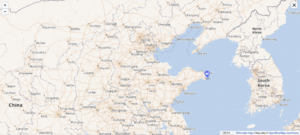





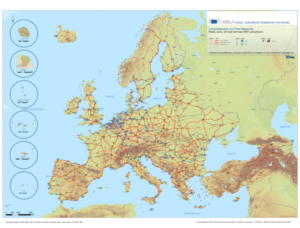



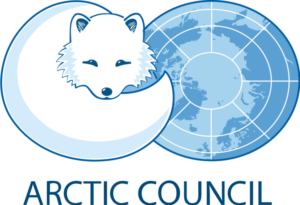


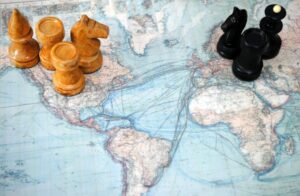

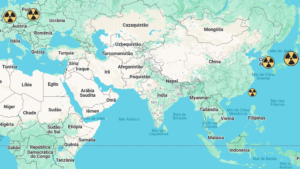
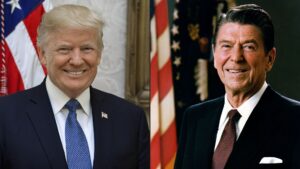

[…] members for the purposes of economic and eventually political collaboration. As in the case of the European Union, the union from which it took […]
[…] known in English as the Trans-European Transport Network (TEN-T), is a visionary initiative of the European Union (EU) aimed at creating an efficient, multimodal and high-quality transport infrastructure across Europe […]